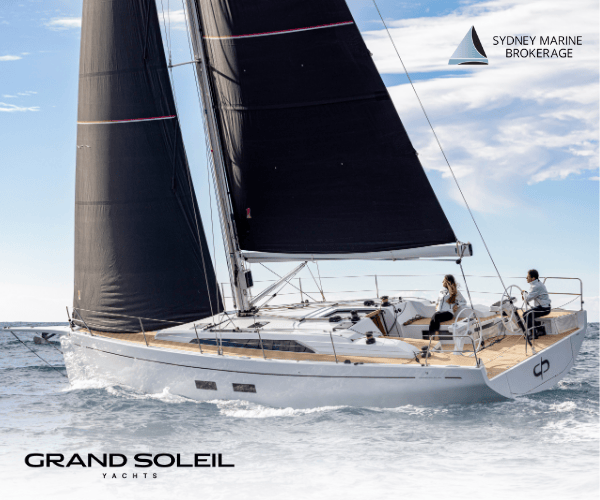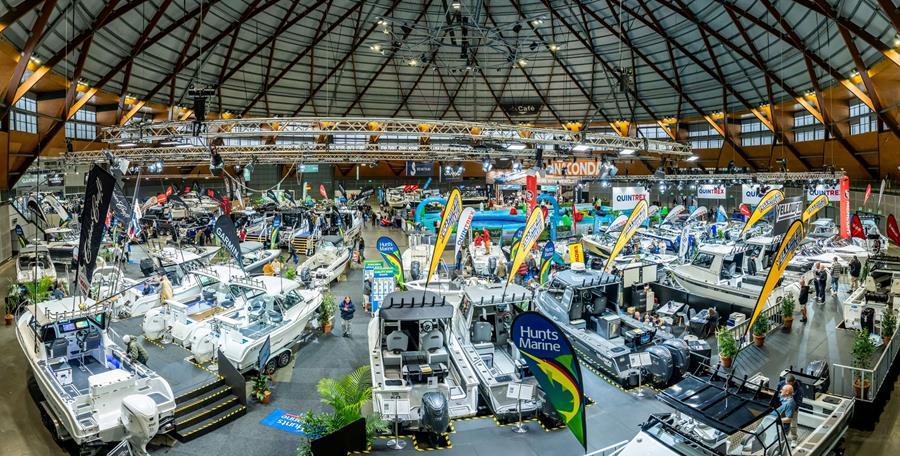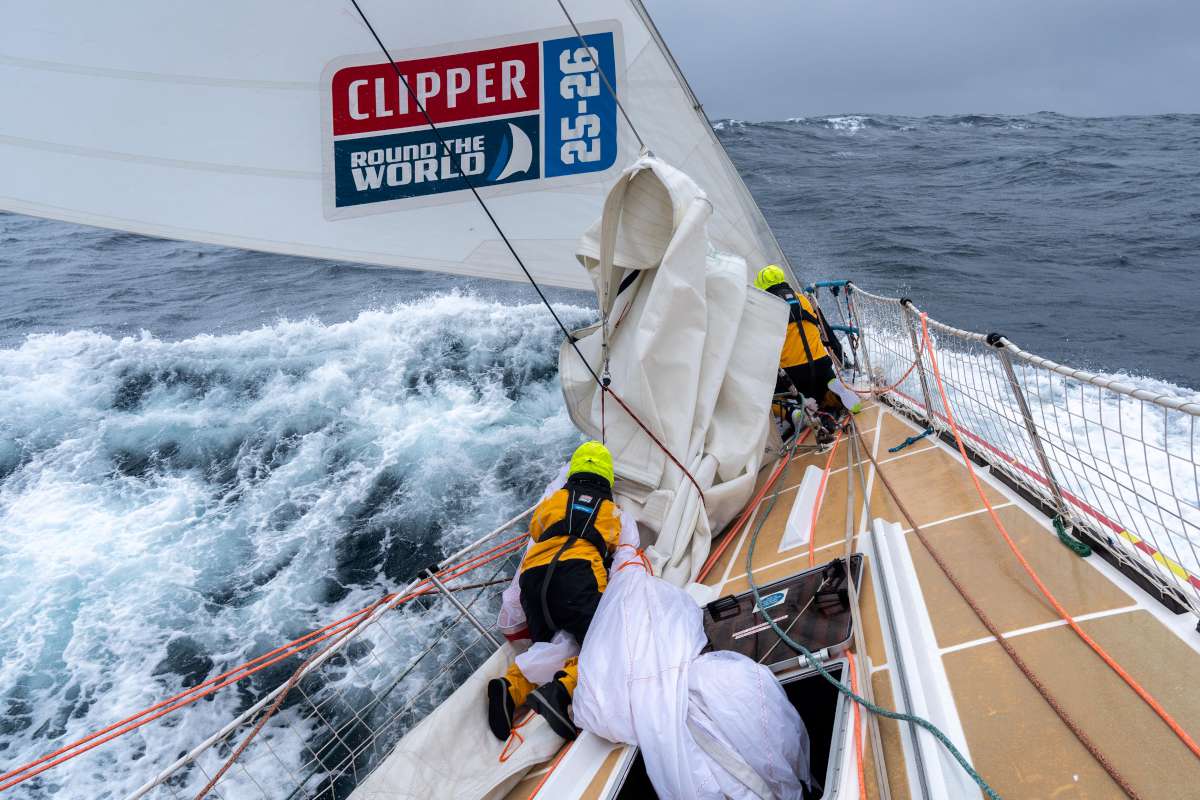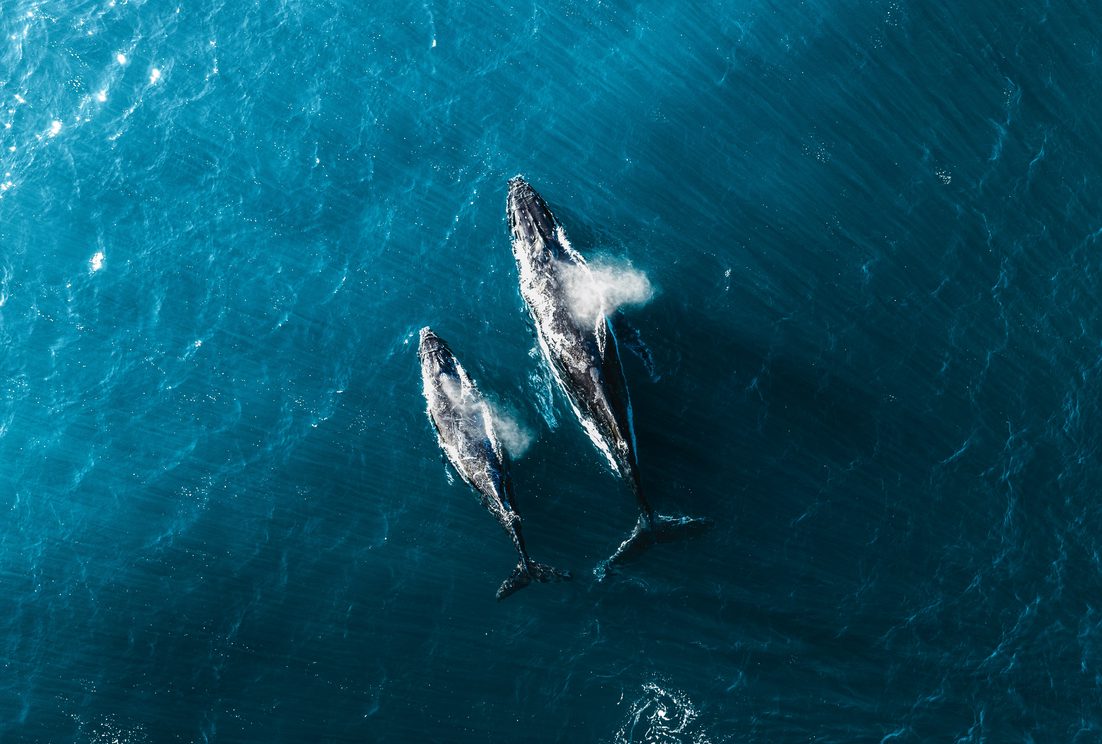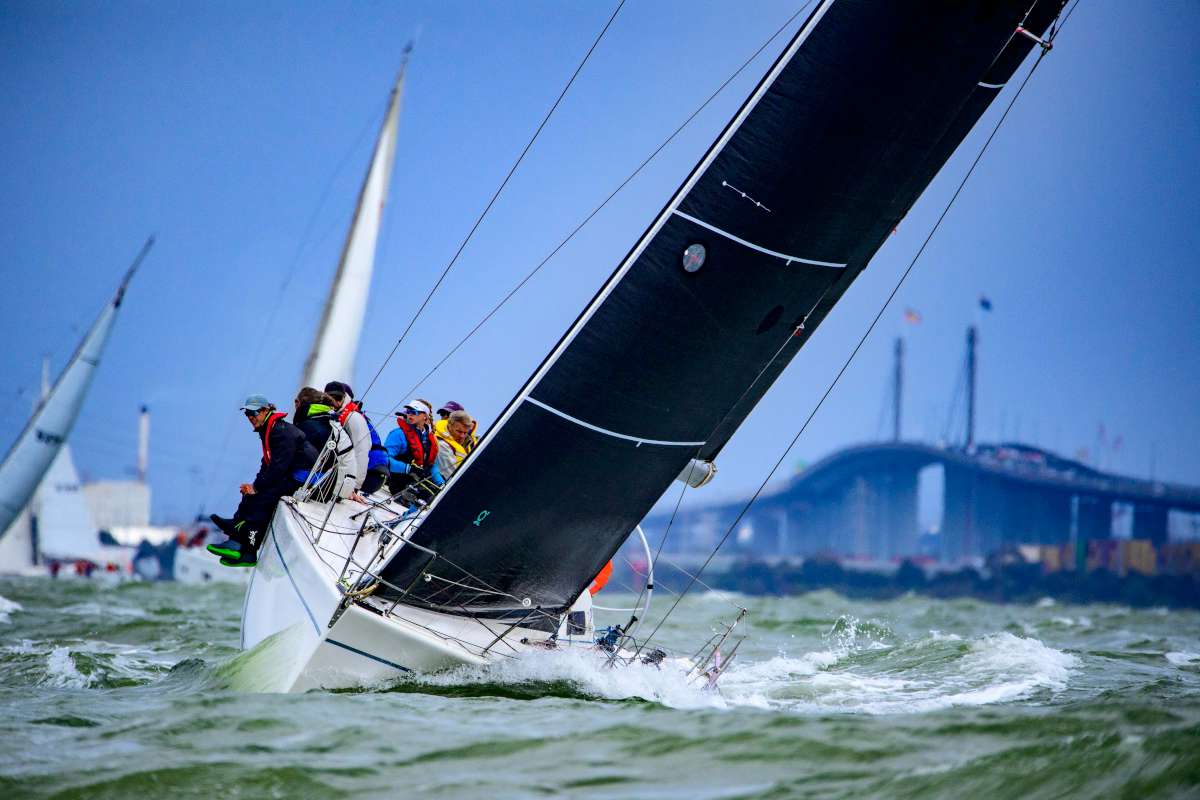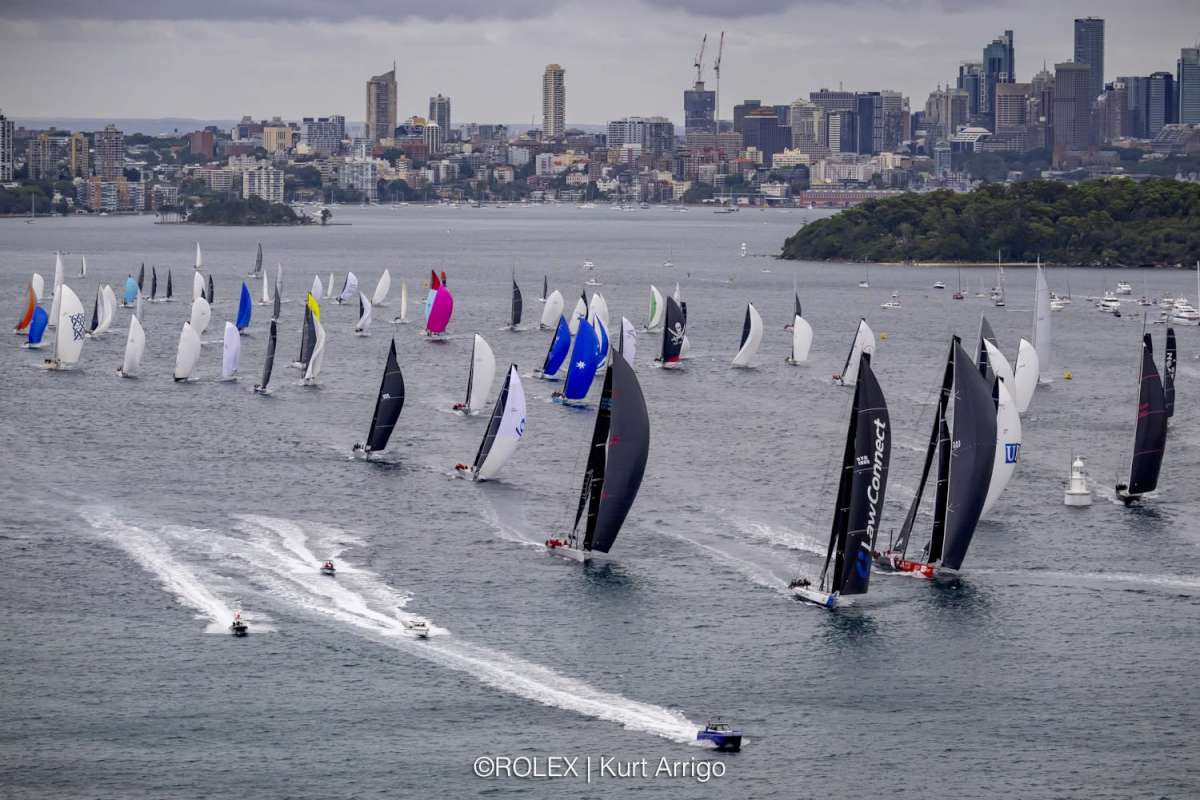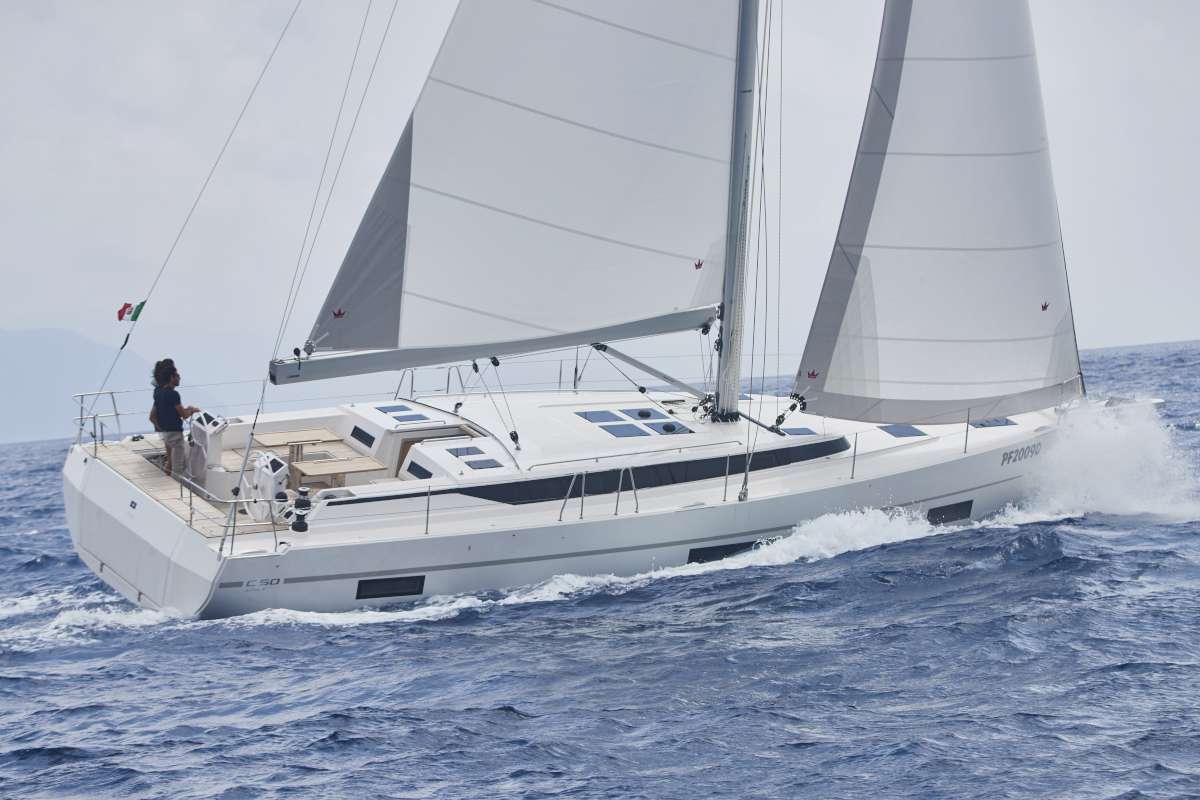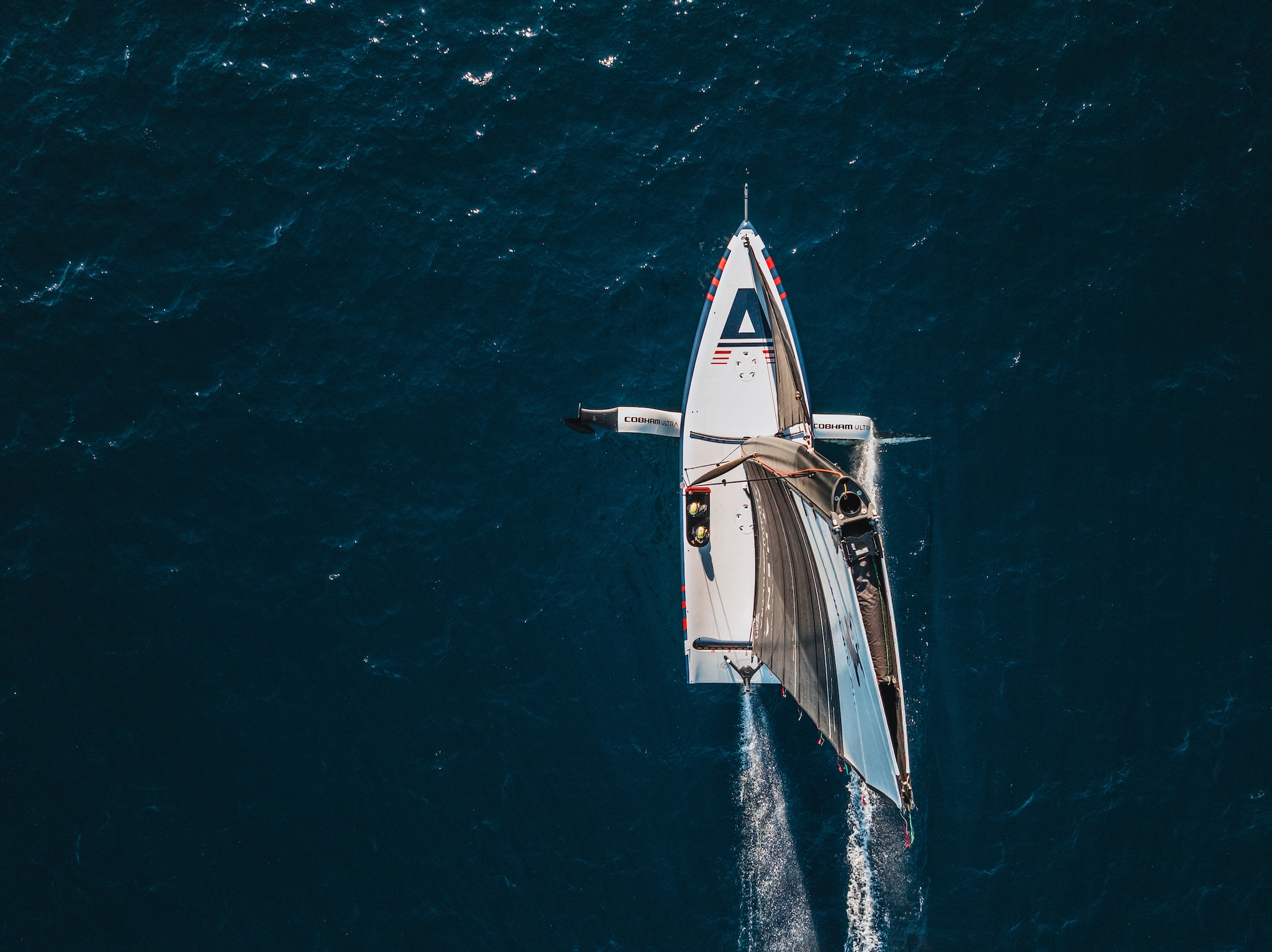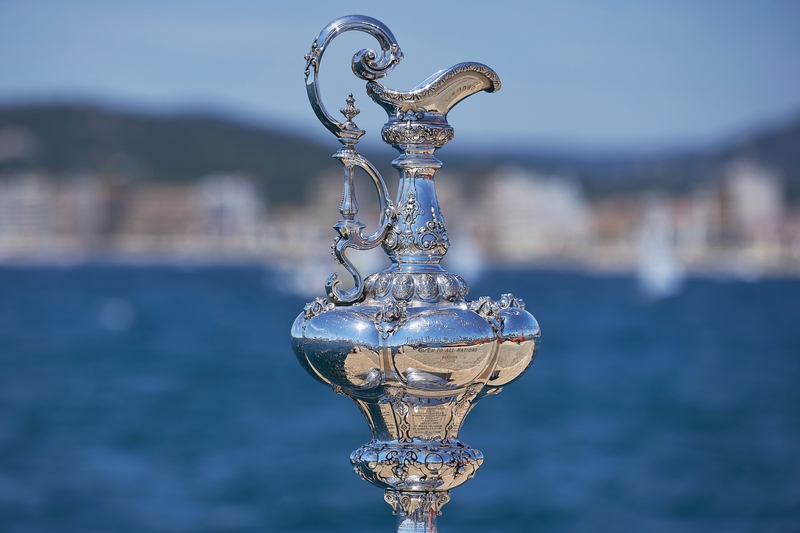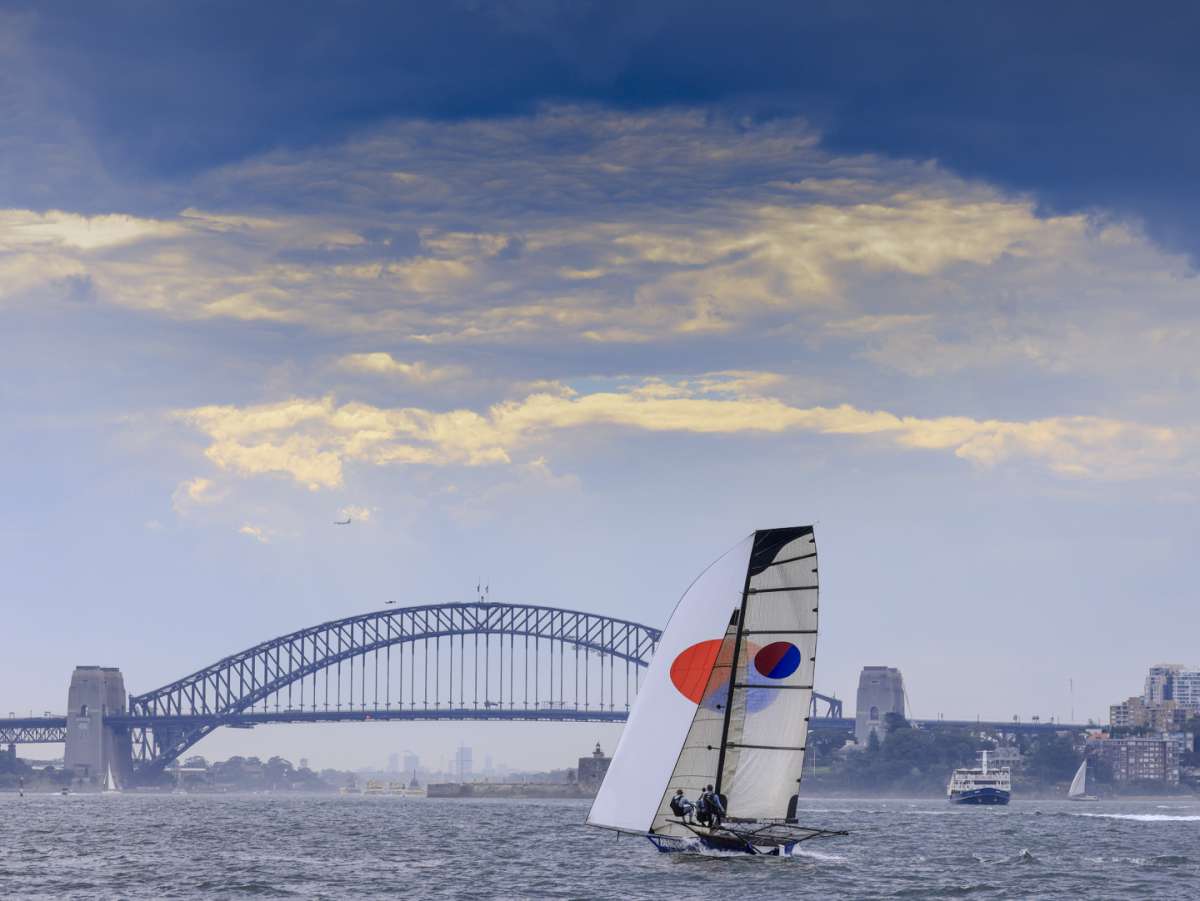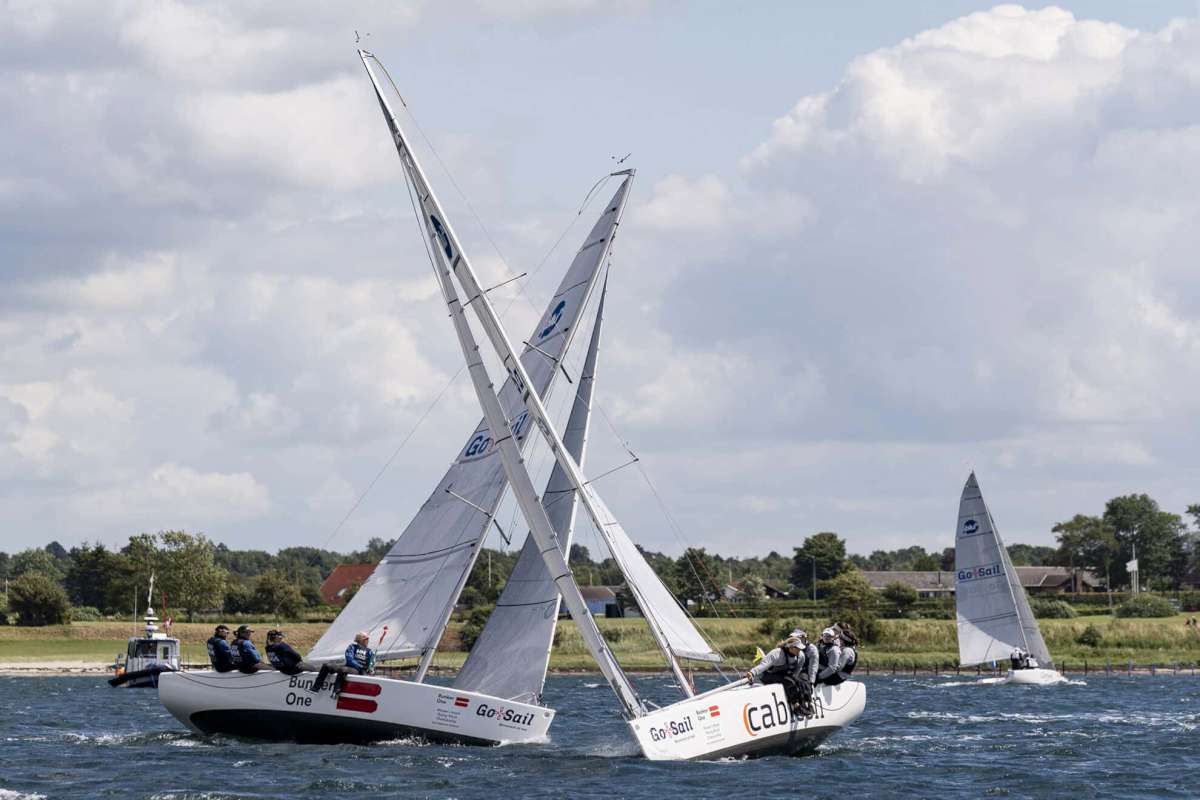IMOCA 60s are incredible machines. Every go-fast feature you can imagine is onboard: canting keel, rotating wing mast, water ballast, and all of this can be handled by just one person. This year, the class will take a step up, with all six new-builds featuring lifting foils. The conventional straight dagger-boards are gone. In their place are L-shaped foils that provide vertical lift, righting moment and side-force. Round the world times could be slashed by up to six days, representing a huge increase in average speed.
Yet still, no one has ever crossed an ocean, let alone circumnavigated singlehanded, in a semi-foiling monohull. So despite all the promising computer predictions, how will they really go offshore? Can the skipper make use of all this speed potential?
These are questions that should be answered in this year’s Transat Jacques Vabre, the first race where the new boats can truly unleash their potential. To give you a pre-race overview of what’s in store, we’re going to examine how IMOCA 60s have evolved into semi-foilers, what makes them tick, and what to expect in the lead-up to next year’s Vendee Globe.
One design but not…..
But firstly, let’s look at how this once ‘open class’ nearly turned one-design. It was after the 2012/13 Vendee Globe, where three boats lost their keels, that the rules were heavily revised to improve safety. While a one-design boat was the preference of almost half the skippers, the final compromise was a half-way house that would not stifle innovation. The key changes included:
-
One-design keel, made from forged steel, considered the most reliable material,
-
One-design mast, with the option of
rotating wing or fixed, -
One-design hydraulics to drive the keel,
-
Maximum beam of 5.85m (previous
IMOCAs were up to 6.3m wide) -
Maximum of four ballast tanks
(instead of the usual 10)
All of this made a huge amount of sense considering the small developments that had been occurring with masts and keels over recent years. The one-design parts all come from a single supplier, and save teams valuable time in the design and fit-out phases. They do result in slightly heavier boats, a disadvantage in light airs. Yet the use of foils compensates for this, requiring less ballast in breezier conditions and therefore giving a lighter boat overall.
Six boats, One design team
While the one-design aspects have altered teams’ priorities, the overall design process has been unique. Thinking back to the 2008 Vendee Globe, the fleet of 30 comprised of 20 new boats designed by architects including Farr, Juan K, Verdier/VPLP, Finot and Owen Clarke. But oh how times have changed. This Vendee Globe cycle, all six teams have chosen to work with the Verdier/VPLP powerhouse responsible for first, second and fourth place-getters in the last Vendee Globe (and also for the maxi Comanche).
Since their first IMOCA Safran was launched in 2006, they have been at the centre of a shift towards lighter, leaner and more easily managed boats. The keys to their domination are sophisticated (and complex) structural layouts and a very thorough approach to hydrodynamics. You might also say it’s due to the number of young, clever minds who contribute to each design: up to 10 people will work on any given project, with many of these currently linked to America's Cup teams in some way. So the collaboration draws on both mono and multihull expertise, and involves people who are at the core of the latest foiling developments. Generally, VPLP focus on hydrodynamics and structural design, while the teams are left to define the deck, interior and systems layout, along with monitoring the build and post-launch development.
So what makes this new generation special? Quentin Lucet, manager of IMOCA projects at VPLP, explained that “they have benefited from thorough and detailed aero and hydro optimisations. We have used a combination of wind tunnel and computational fluid dynamics (CFD) to look at how to reduce windage and understand the best one-design rig to use (teams must choose wing or fixed). We conducted CFD studies into all the different foil configurations we could imagine, to arrive at a solution that would perform and be easy to use solo (it’s known as the ‘moustache’ foil).”
“Using CFD to simulate the boat in waves was a new analysis tool that showed up surprising shortfalls of certain foil configurations.”
And while on the subject of foils, it’s worth mentioning that on an IMOCA 60. To achieve the confidence to fit these on all six boats, the designers conducted many CFD runs (think ‘virtual towing tank’) to ensure any anomalies were exposed.
Learning to fly…
The recently released footage of Gitana sailing in 30kts with half her keel in the air has astonished the world. We have seen foil assisted monohulls before, but none have lifted so consistently high out of the water. How is this all possible? There is still a bulb of almost 3t on the end of the keel fin, and an overall sailing displacement of around 9t, so how can a little foil do so much?
To an extent, it’s driven by the IMOCA rule, which states that the one-design canting keel must have a keel pin tilt of four to nine degrees. In other words, the forward pin on the keel is higher than the aft, and when canted to the maximum angle of 38°, the keel fin produces a lot of upwards force. While this has the effect of tipping the boat over, it also helps raise it out of the water, reducing wetted surface area. When you combine this with a board to leeward, which is producing an opposing moment bringing the boat upright (often greater than the keel fin), the net effect is the semi-flying state. How stable this is depends on the sea state, and in significant seas we expect to see the boats sailing lower.
Aside from generating vertical lift, the new boards must also produce side force. The IMOCA rule only permits the use of five appendages, so there’s only room for two dagger boards. Even having a single dagger board on the centreline, and a single DSS foil sliding from one side to the other (as seen on Wild Oats XI), is not possible, as this is viewed as three foils since the lateral board can protrude either side of centreline. This puts designers in a sticky situation. The L-shaped ‘moustache’ foil is what VPLP/Verdier believe is the best solution to this problem. And while it cannot generate the same amount of side-force as a conventional dagger board, training sessions and races between new and old boats so far have shown them to be knots faster off the wind. So for the Vendee Globe Race the gains are there, but in mixed races such as the Fastnet, we can expect to see some of the highly optimised older boats still in the game.
Six boats, Six very different approaches
You might wonder, how does Verdier/VPLP maintain confidentiality between projects? Can you imagine America's Cup teams sharing their designers? Did all teams get a one design boat for the price of a prototype? Definitely not.
The six boats can be placed into three distinct categories. The first comprises Safran and Banque Populaire 7, built by CDK Technologies, and Vento di Sardegna, built by Persico in Italy. All are based on the same ‘maximum-beam’ hull shape optimised to produce the most power when reaching. They started development early, even before the rule was finalised, and were first to hit the water and start learning about sailing with lifting foils. Despite sharing the same hull shape, the deck layouts, steering systems and cockpits are all different
The design phase for the second bunch, Edmond de Rothschild and Saint-Michel Paprec, began six months later. The teams were focused on building a more versatile vessel rather than concentrating solely on power and maximum speed. This is evident in their slightly narrower beam, but also in the cockpit layout. IMOCA 60s have traditionally had tight, cosy cockpits that are secure yet very inconvenient with a crew onboard.
The designers have always favoured a traveller beam at deck level, but with these two boats, a totally new philosophy has emerged. There are no side decks aft of the coach roof, instead the cockpit floor is raised relative to the pit area, and the traveller runs along the deck. The benefit is easy movement of sails fore, aft, and side to side, a huge bonus if there’s only one of you to move the stack. The winches are mounted super low in a pit well protected by the coach-roof overhang, and the whole arrangement looks easy to live with.
In the third category is HUGO BOSS, built in England by Green Marine. Skipper Alex Thomson and his technical team have incorporated some interesting ideas, most notably the chamfered deck up forward, and the very deep cockpit.
What comes next?
After giving you an overview of the variations between boats in this new generation, it seems the idea to remain a development class has been a winner, at least for the sake of design and innovation.
Every skipper has the layout and foil design that he thinks works best, but which one is right? Can the autopilot drive the boat in its semi-foiling mode, and if not, how much time can the skippers spend at the helm trying to push that little bit harder?
The Transat Jacques Vabre Race, which starts late October and runs from Le Havre (France) to Itajai (Brazil) is predominantly off the wind. It will provide the first clues as to which way the class will go and if the verdict is clear, we can expect retrofitting of foils to older designs prior to the 2016 Vendee Globe Race. These are big steps to be taking for a class made up of many lower-budget campaigns (compared to the Volvo for example), so expect the innovation to continue as everyone learns to sail in a different way. Watch this space. ✵



